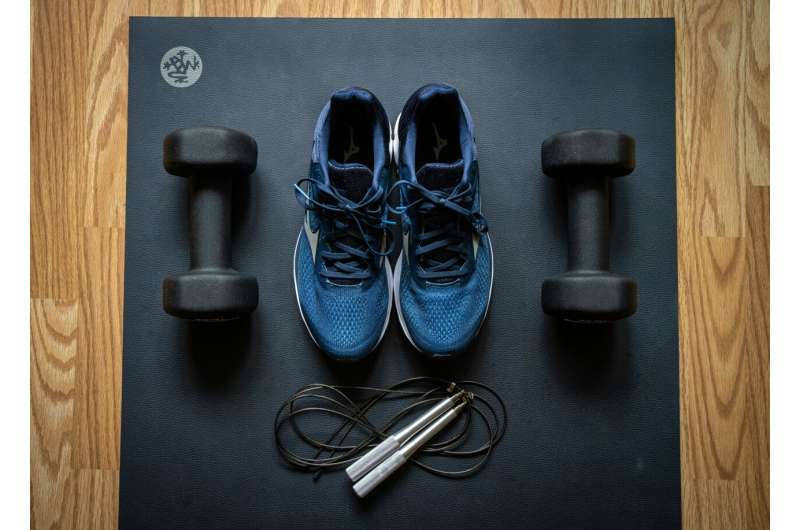This article has been reviewed according to Science X's editorial process and policies. Editors have highlighted the following attributes while ensuring the content's credibility:
fact-checked
peer-reviewed publication
trusted source
proofread
Focusing on built environments over muscles and gears can boost athletic performance

The field of sports science has gained significant momentum in recent years, with the primary goal of research being directed towards optimizing athletic performance. However, achieving this goal is currently challenging, primarily due to the presence of various factors such as physical workouts, mental attention, nutrition, and resilience, which all play crucial roles.
Gaining insights into such a multifaceted challenge requires moving beyond a sole muscle- or equipment-centered approach towards performance improvement. Instead, an interdisciplinary perspective is essential to devise effective strategies for performance optimization.
Looking at this challenge from an urban design perspective provides a unique view of thinking about how buildings, parks, and stadiums can help athletes perform better. Studies have also shown that the design of these spaces affects people's health behaviors, influencing the way they exercise or the food that they consume. However, the impact of built environment design on athletes' performance is not well understood.
Recently, researchers from the Japan Advanced Institute of Science and Technology (JAIST) identified three key factors in built environment design that could enhance athletes' performance. Led by Associate Professor Mohammad Javad Koohsari from JAIST, who is also an adjunct researcher at Waseda University and an honorary associate fellow at Deakin University (Australia), the study team included Associate Professor Andrew T. Kaczynski from the University of South Carolina and Professor Motohiko Miyachi and Professor Koichiro Oka from Waseda University.
Their study was published online on 14 March, 2024 in BMJ Open Sport & Exercise Medicine.
To this end, Dr. Koohsari and his team reviewed existing literature to underpin the potential of built environment design in athletes' performance optimization. He explains, "We have discussed how creating personalized training areas, getting fans and the community more involved, and making it easier for athletes to access things like health care and transportation can really boost their performance."
Studies have revealed the connection between indoor built environment features, such as shade and air quality, and the mental health of residents. Similarly, researchers suggest that training arenas equipped with open-air lounges, comfortable furniture, and plants could improve the mental well-being of athletes. These spaces could also allow them to take breaks and recharge between training sessions.
Furthermore, such built environments could also have unique spatial designs for each type of athlete, for example, swimmers diving in adjustable pools and runners training on multifaceted indoor tracks.
A study conducted during the 2013 FIFA Confederations Cup in Brazil revealed fascinating insights into how accessible and pedestrian-friendly built environments influence fans' walking preferences. The researchers argue that accessible transportation around the stadiums and urban centers could encourage more fans to attend sports events.
Dr. Koohsari emphasizes, "Support from fans and the community is a key motivator for athletes and can significantly boost their performance. If designed optimally, built environments could also become incredible catalysts for driving fan and community engagement."
In addition to transportation, the researchers also discuss improving accessibility by establishing sports facilities near health care centers. Such immediate access to medical centers could ensure streamlined attention to athletes' injuries and facilitate timely recovery. Similarly, if sports stadiums are placed within urban city centers, it could be less isolating for athletes and fans and boost the local economy and property values.
Overall, these insights can be of importance for policymakers, offering them consideration when integrating urban design elements with sports facilities. However, despite the proposed impact of built environment design on athletes' performance,
Dr. Koohsari notes, "Lack of subjects related to built environments in sports science curricula is holding back the progress in this area. As a result, this could limit awareness about the potential of built environments on sports performance. It is, therefore, crucial for researchers from sports science, urban design, and environmental psychology to collaborate and address this challenge collaboratively."
In summary, combining urban design with sports science can improve athletes' performance and well-being, benefiting their overall health and community involvement.
More information: Mohammad Javad Koohsari et al, Building on muscles: how built environment design impacts modern sports science, BMJ Open Sport & Exercise Medicine (2024). DOI: 10.1136/bmjsem-2024-001908




















